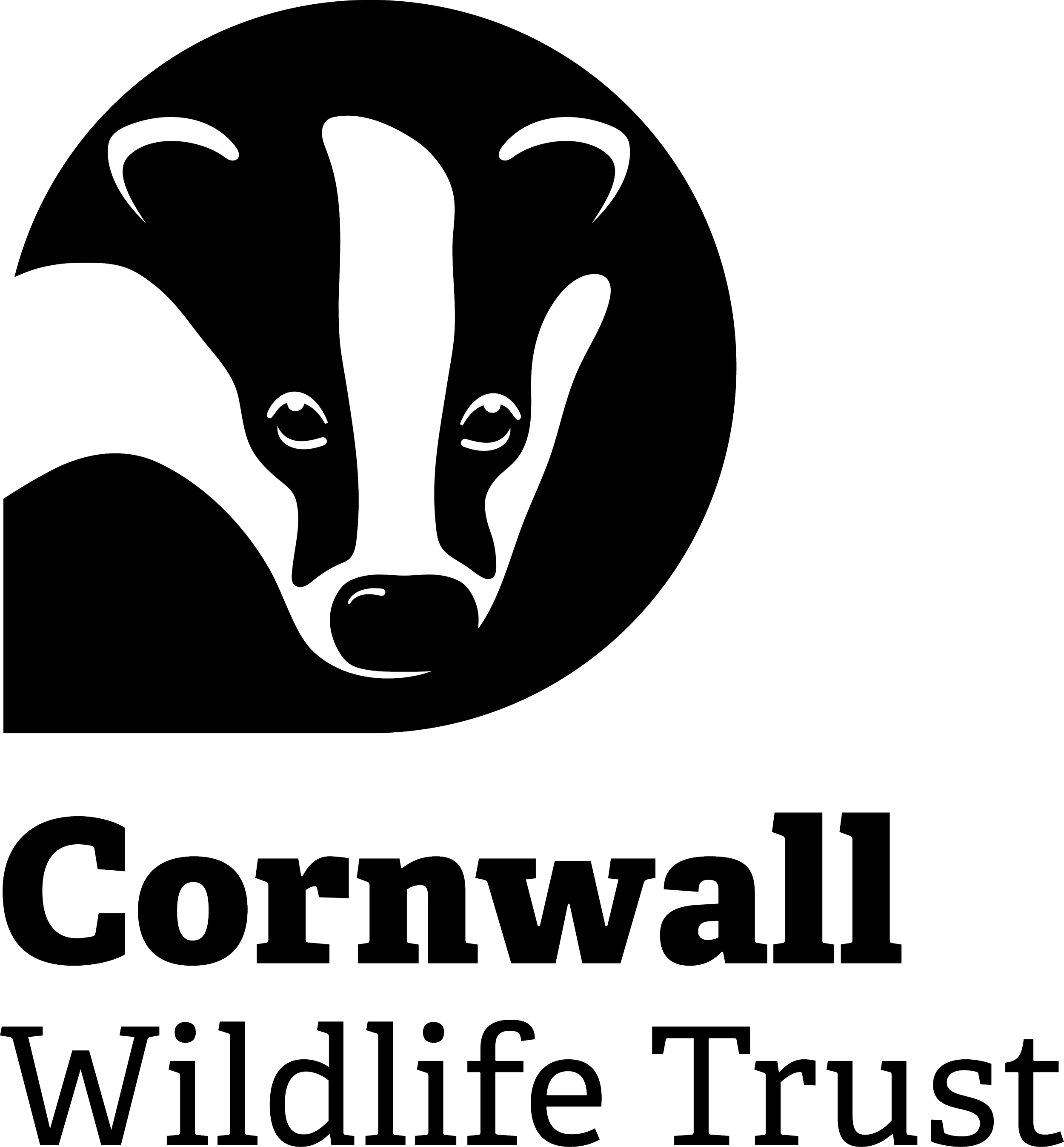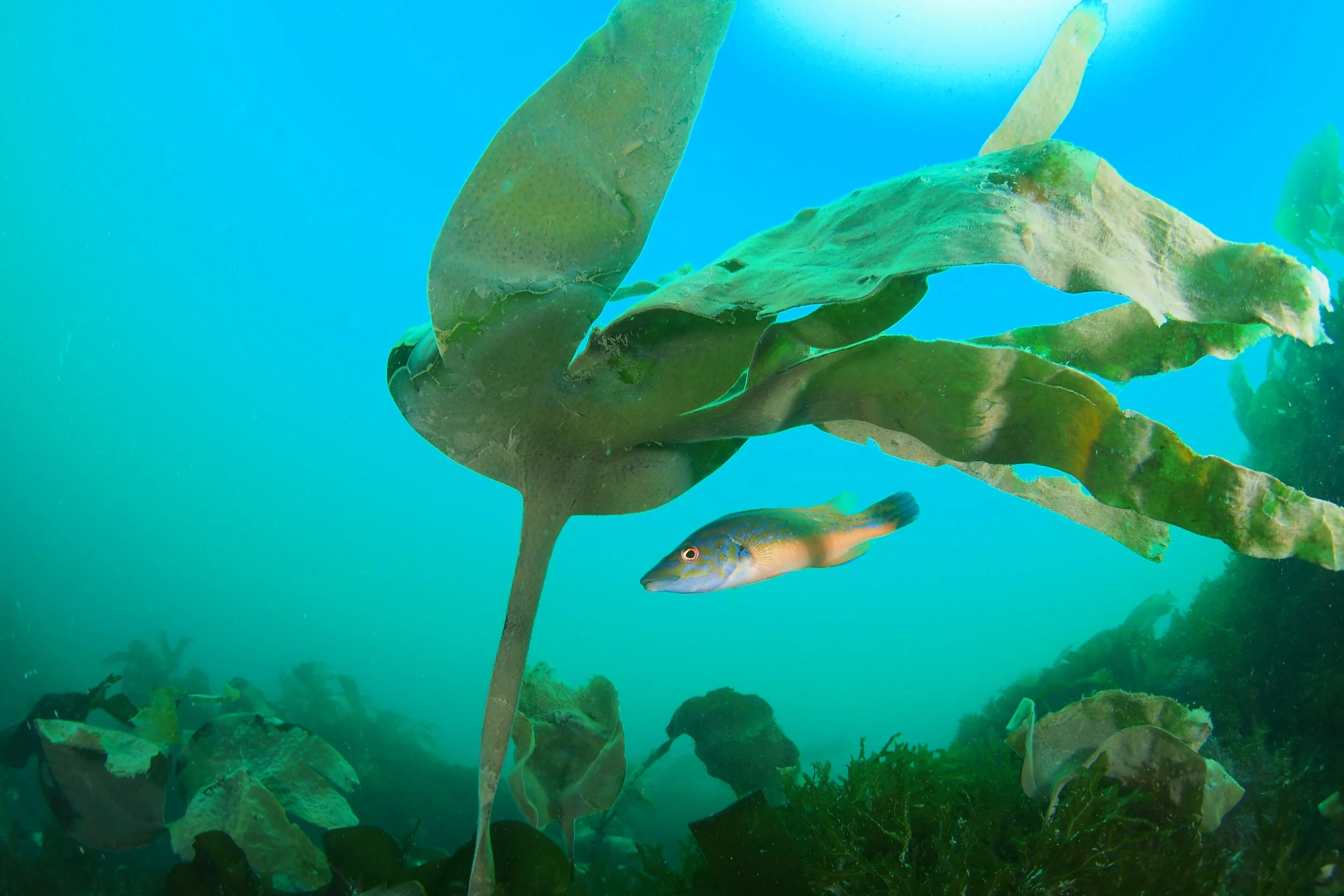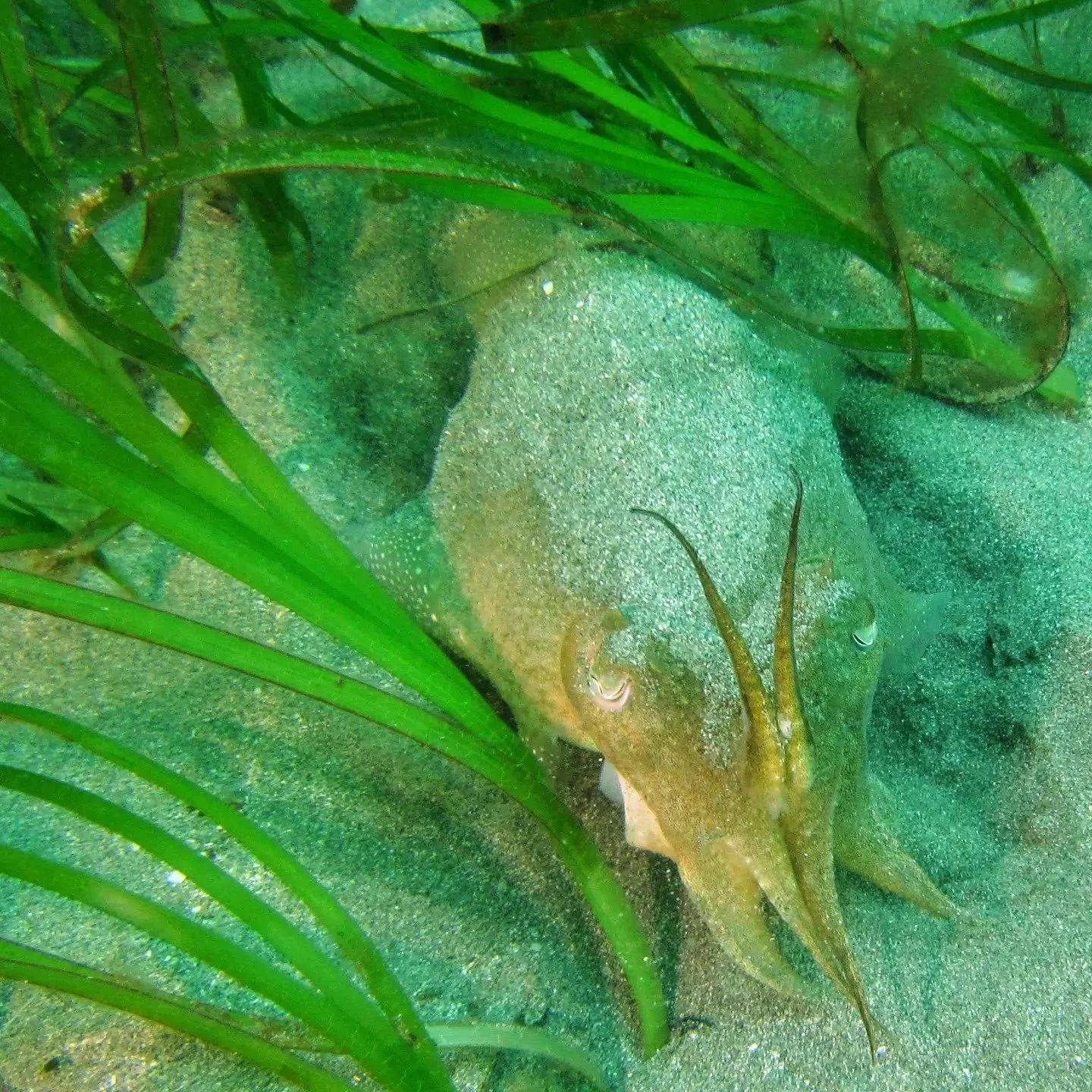A Haven for Marine Wildlife
Matt Slater Marine Conservation Officer
Cornwall Wildife Trust
From Pendower beach you can see right across Gerrans bay from Nare head right up to Pednvaden near Portscatho.
This is an area with incredibly rich marine habitats that support a wealth of marine wildlife, many of the species that live there have been important to people for food for thousands of years but the habitats themselves that these commercial species rely on are only recently becoming better understood and appreciated!
After a southerly blow you often find pieces of bright green seagrass washed ashore on Pendower beach – this is seagrass, the only flowering plant that can survive and thrive in seawater, and Gerrans bay is home to a large, healthy bed of seagrass that covers an area of 103.8 hectares, as was uncovered by an acoustic survey carried out in 2022 by Cornwall IFCA. The bed extends from off Porthbean all the way to Nare Head and out as far as the 10m contour that follows the curve of the bay.
Seagrass beds are important habitats in many ways, providing shelter and feeding grounds for a wide range of juvenile fish including, pollack, bass, bream, plaice and sole. Diving through a seagrass bed is an incredible experience and you never know what you may encounter, pipefish, cuttlefish, gurnards, dragonets and if you are really lucky you may even see a seahorse! (incredibly rare in Cornish waters!)
Further offshore and the bay is home to large areas of maerl beds. Maerl is a slow growing and delicate species of red corraline seaweed, growing in the form of unattached spiky nodules, purple in colour and reinforced with calcium carbonate that the seaweed extracts from the water around it. Maerl beds are found all along the coast of Falmouth bay and east as far as St Austell bay. On the seabed in Gerrans bay they form large areas of rippled seabed with live maerl nodules living in the troughs and dead maerl on the peaks. Maerl beds are also home to a wide diversity of marine species as the three dimensional structure of the nodules create thousands of gaps and hiding places which invertebrates can hide in! Maerl beds are also very important nursery areas for scallops which of course are commercially fished all around Cornwall’s coast. Sadly our maerl beds are very vulnerable to damage from mobile fishing gear such as beam trawls or scallop dredges and in some areas the mearl has been significantly damaged. Research carried out by Exeter university has shown that maerl beds are not only valuable for the biodiversity they host but they are also excellent at trapping and storing sediment which builds up below a maerl bed. This storage of organic matter for long time periods makes them an important blue carbon habitat which is actively helping us lock away atmospheric carbon.
The rocky shores and shallow rocky reefs around the bay are home to a wealth of marine life including beautiful rockpools and intertidal reefs, and submerged reefs that are home to rich kelp forests, vital primary producers in our oceans and again vital habitats for many marine species. It is important that we appreciate the many ecosystem services that these habitats provide and there has never been a more important time to monitor them and look after them as climate change is driving rapid changes in our marine environment.
Cornwall Wildlife Trust are always looking for help with their essential citizen science and conservation projects – please get in touch our visit our website for lots more information!
Cuckoo Wrasse
Cuttlefish
Juvenile Crawfish
Closeup of Maerl bed
Cuckoo Wrasse
Imperial Anemone on Maerl






